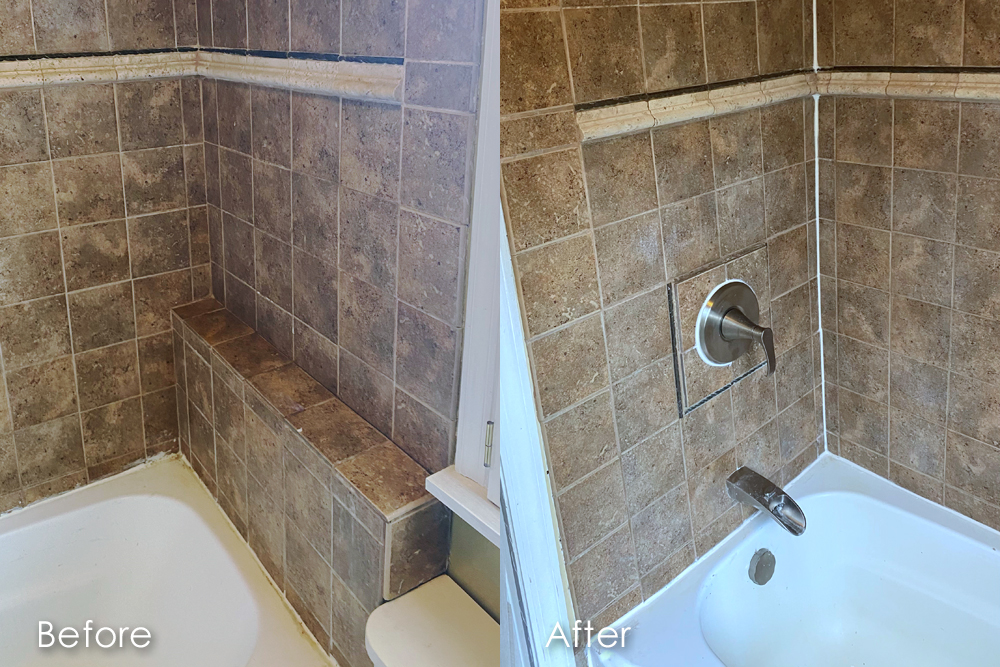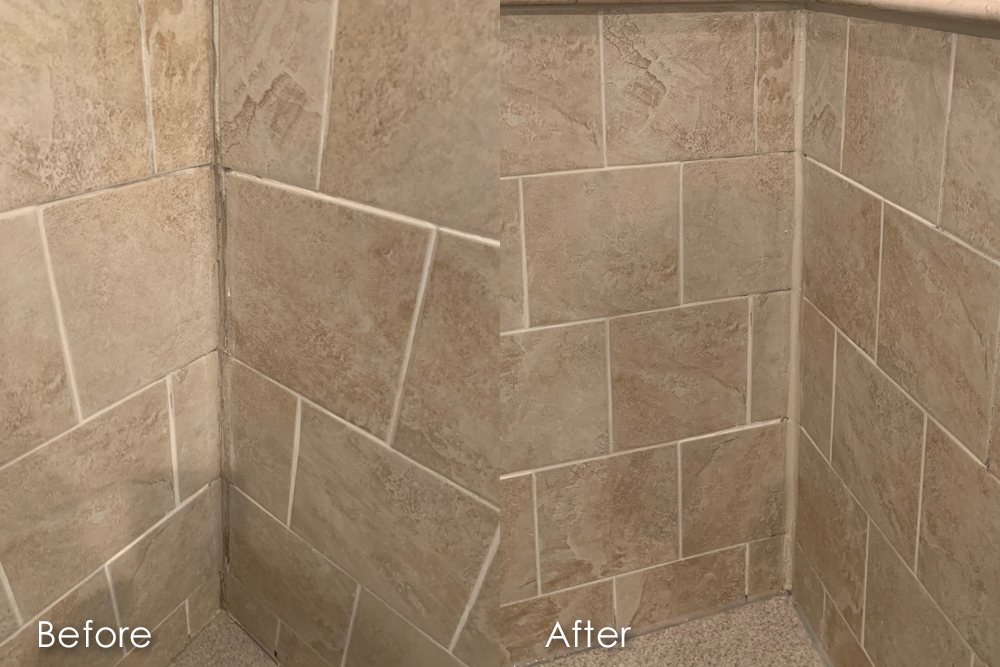When to Recaulk Your Shower
Have you ever noticed your shower doesn’t look clean, even after a thorough cleaning?
Take a close look when you are seeing that not-so-clean result. You might notice staining on your grout, but it could be more than that – your caulk. If your caulk is looking stained, is this one indication that it’s time to recaulk your shower? Yes, staining is one sign that it’s time for shower recaulking.

Do you know when it’s time to recaulk your shower?
Here’s why stains could be cues for when to recaulk your shower.
There are a few types of stains, as they pertain to shower environments. Simple stains, like soap scum and contaminants we wash from our skin and hair are quite common. They are also easier to clean away than other types of stains. Then, there are hard water or tap water impurity stains. These can also be quite common but can be a bit more difficult to remedy. If left to build up over time, iron and other minerals found in tap water will require a professional cleaning for your grout and tile. However, these types of stains that have set up around your caulk could lead to a recaulking project. Unlike tile and grout, there are really no methods for deep cleaning caulk. As for other stains that can occur on and around caulk, mold and mildew could be the culprits. These too, will mean that it is time to recaulk your shower.

It’s important to know when to recaulk your shower.
How do I know when to recaulk my shower otherwise?
Shower caulk – or caulk anywhere – does not have to be irreparably stained in order to require replacing. Even beautifully clean caulk can have issues. Caulk that is cracking on the surface should be replaced. If your caulk is pulling away from your tub, tile, or shower glass, it is time to recaulk your shower. Since caulk is the barrier that protects the areas behind sinks, tubs, and showers, it is essential to keep it healthy and intact. To allay potential water damage, it is important to replace shrunken or separated caulk quickly.
Knowing when to recaulk your shower is important, but so is this!
As with any project around the home, there is a correct way and incorrect way to complete the job. Proper caulk repair should never involve installing new caulk until all the old material is removed. On the surface, it seems like it should work, but it will not.
There are a few reasons that adding a fresh layer of new caulk on top of old caulk is not a good idea.
- Your new caulk might not match or look otherwise messy and unappealing.
- Your new caulk layer will not properly adhere to the old material.
- Even if your new caulk achieves short-term adherence, you could be sealing moisture and mold beneath your old caulk layer.
It simply is not worth it to try to patch old caulk with new caulk. What is worth it? Getting in touch with The Grout Medic of San Diego Metro for all your grout and tile care and repair needs, of course! Call us at 619-773-0093 or email sandiego@thegroutmedic.com.

